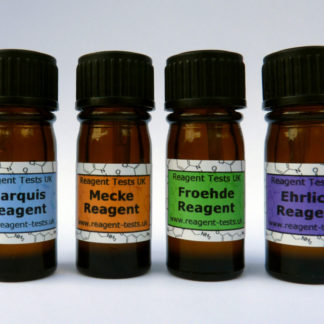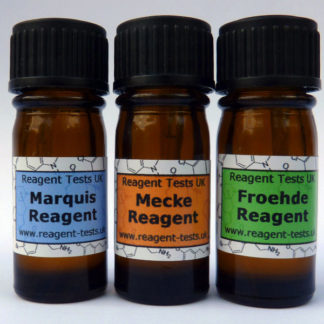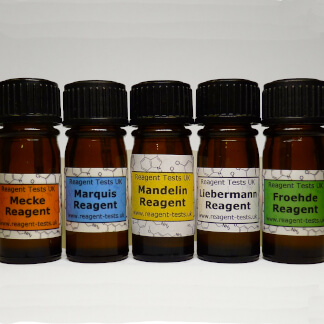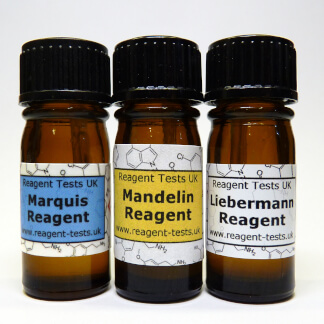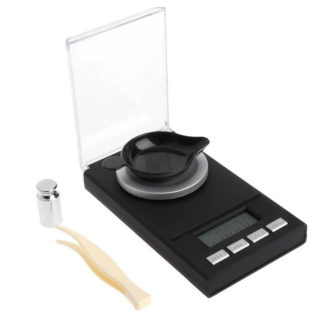The instructions for our normal solid tests are found here. This page is preserved as an archive. It was last updated in April 2020 and will not be updated again.
Reagent tests are very simple to use. You need a glazed ceramic surface (the bottom of a plate or mug is good) and some water. You should always wear safety specs and gloves as the reagents will damage skin & eyes.
- Make sure the area is clean and well lit. Gather a few shavings (~3mg) of the substance to be tested.
- Remove the lid and tip the bottle upside down slowly by rotating it, watching that the nozzle is over the substance.
- Hold the bottle vertically until a drop comes out. This can take over 60 seconds.
- Do not shake the bottle as you will waste drops and drops can flick onto surroundings. Warming the bottle (very slightly) helps the air expand to push out liquid.
- Observe the colour change for 30-90 seconds.
- Rinse with water. Ignore results after the first colour change.
The image below shows the expected colours from our reagents with a number of drugs. Positive reactions with the ehrlich reagent are all shades of purple and can take five minutes to develop.
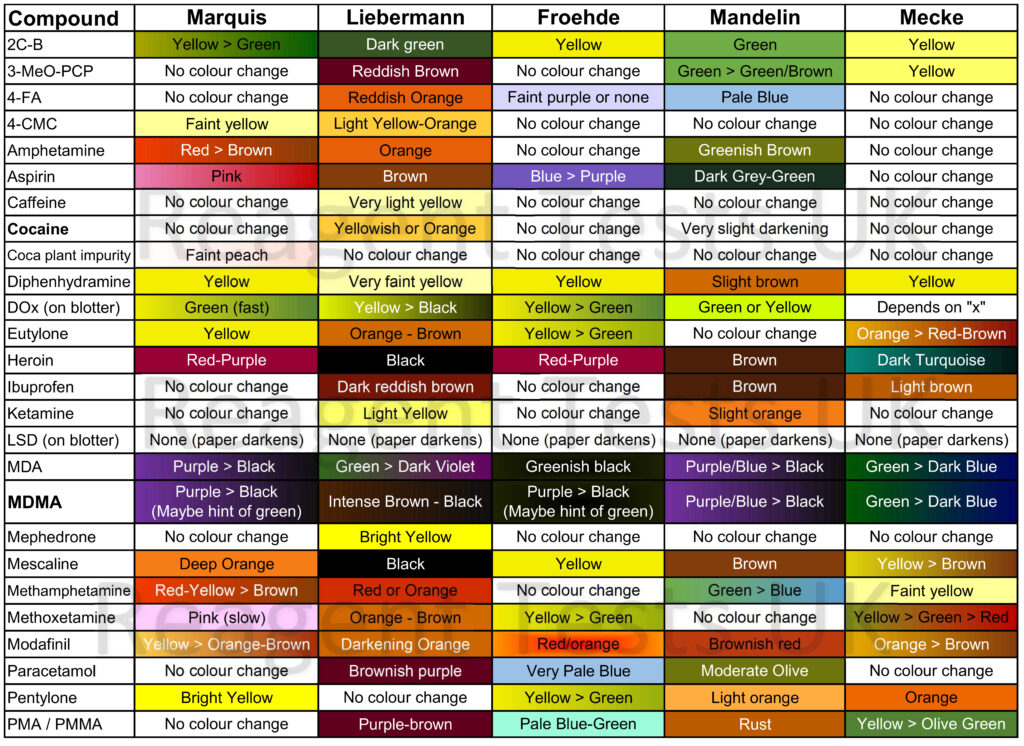
The ehrlich reagent will go purple or pink if it is exposed to an indole compound like LSD, an analogue of LSD or a tryptamine. No 0.5cm² blotter can fit an active dose of tryptamine onto it. Phenethylamines (like 2C-B and NBOMe) will not give a colour change with the ehrlich reagent.
Phenethylamines can be detected with the other reagents, such as marquis. Other reagents make paper go brown and show the substance colour change in the liquid. If a blotter is sold as LSD but the marquis liquid changes colour after a test then it contains another substance (this is bad).
You can check our blog for more obscure compounds. There are a vast number of resources online so do search online or email us to see if we have results for your compound.
Reagents have a shelf life of around 12 months when stored upright in a fridge. Allow to warm before opening to avoid condensation getting in. To dispose of reagents, wash the liquid down the sink with gently running water.
If reagents contact the skin or eyes then rinse immediately with cold water. Seek medical attention if ingested – reagent tests are highly acidic.

